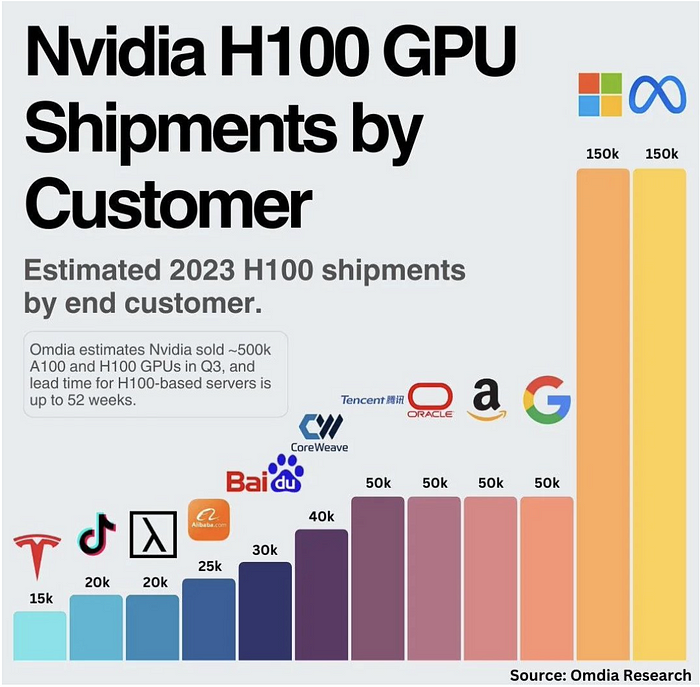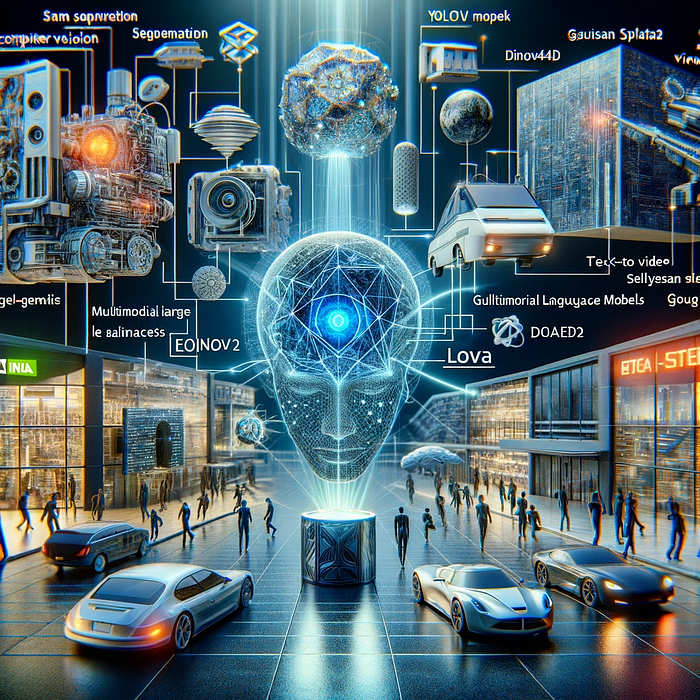
Computer Vision: 2023 Recaps and 2024 Trends
Last Updated on December 30, 2023 by Editorial Team
Author(s): Luhui Hu
Originally published on Towards AI.

As we bid farewell to 2023, it’s evident that the domain of computer vision (CV) has undergone a year teeming with extraordinary innovation and technological leaps. This year has been a testament to the remarkable progress in AI-driven visual technologies, profoundly altering our interaction and interpretation of visual data. Encompassing everything from generative AI marvels to sophisticated analytical tools, CV has not only evolved but also redefined its boundaries.
CV 2023 Recaps
Below, I present an encapsulation of the top 10 advancements that have been pivotal in shaping the computer vision landscape throughout 2023:
- SAM (Segment Anything Model): Developed by Meta AI, SAM emerged as a foundational model for segmentation tasks in CV. It revolutionized pixel-level classification, enabling the segmentation of virtually anything in an image. This development opened new avenues for complex segmentation tasks across various datasets.
- Multimodal Large Language Models (LLMs): These models like GPT-4 bridged the gap between text and visual data, providing AI with the ability to understand and interpret complex multimodal inputs. They played a crucial role in enhancing the capabilities of AI to process and react to a combination of text and visual cues, leading to more sophisticated AI applications.
- YOLOv8: This iteration of the YOLO series set new standards in object detection with its enhanced speed and accuracy. YOLOv8’s advancements have made it a preferred choice for real-time applications that require quick and precise object detection.
- DINOv2 (Self-supervised Learning Model): DINOv2 marked a significant step in self-supervised learning within CV. By reducing the reliance on large annotated datasets, it demonstrated the potential of self-supervised approaches to train high-quality models with fewer labeled images.
- Text-to-Image (T2I) Models: These models have a long list: Midjourney creations, DALL-E 3, Stable Diffusion XL, Imagen 2, etc. They have dramatically improved the quality and realism of AI-generated images from textual descriptions. They have facilitated creative applications like digital art generation, making AI an invaluable tool for artists and designers.
- LoRA for CV: Originally developed for fine-tuning large language models, LoRA found new applications in CV. It provided a flexible and efficient way to adapt existing models for specific tasks, greatly enhancing the versatility of CV models.
- Ego-Exo4D Dataset by Meta: This dataset represented a significant advancement in video learning and multimodal perception. It provided a rich collection of first-person and third-person footage, enabling the development of more sophisticated models for human activity recognition and other applications.
- Text-to-Video (T2V) Models: T2V models (e.g., Runway, Pika Labs, and Emu Video) brought a new dimension to AI-generated content by creating high-quality videos from text descriptions. This innovation opened up possibilities in fields like entertainment and education, where dynamic visual content is essential.
- Gaussian Splatting for View Synthesis: This technique represented a novel approach in the field of view synthesis. It offered improvements over existing methods like Neural Radiance Fields (NeRFs), particularly in terms of training time, latency, and accuracy, thus reshaping the landscape of 3D rendering.
- StyleGAN3 by NVIDIA: StyleGAN3 pushed the boundaries in generative models, especially in creating hyper-realistic images and videos. This advancement expanded the capabilities of generative models in creating detailed and lifelike digital art and animation.
These ten advancements in 2023 not only illustrate the rapid growth and innovation in computer vision but also highlight the field’s expanding impact across various sectors. From medical imaging to creative arts, these developments are setting the stage for future breakthroughs and applications in computer vision.

CV 2024 Trends
Looking ahead to 2024, here are the anticipated trends set to further revolutionize this dynamic field:
- Augmented Reality (AR) Integration: With a surge in consumer-grade AR devices from giants like Apple and Meta, CV is expected to become more prevalent in everyday applications. This integration will enhance experiences in sectors like manufacturing, retail, and education, offering immersive educational and shopping experiences, and operational support.
- Robotic Language-Vision Models (RLVM): The latest rise in robotics is the integration of Language-Vision Models, transforming robots into more intuitive and interactive AI agents. By blending visual understanding with language comprehension, these models are setting the stage for a new era of smart, responsive robotics, enhancing our daily lives and work in exciting ways.
- Sophisticated Satellite Vision: Advances in satellite imagery, fueled by CV, will enable more detailed monitoring of terrestrial phenomena, such as deforestation, urban sprawl, and marine environments. The enhanced resolution provided by these technologies will be crucial for environmental monitoring and management.
- 3D Computer Vision: Advancements in 3D CV algorithms will play a pivotal role in various applications, including autonomous vehicles and digital twin modeling. These developments promise more accurate depth and distance data, elevating applications in simulation, safety systems, and more.
- Ethics in Computer Vision: With the widespread implementation of CV, there will be a growing focus on ethical considerations. Issues like bias in facial recognition algorithms and privacy concerns in public areas will take center stage, necessitating the development of more balanced and privacy-conscious technologies.
- Synthetic Data and Generative AI: Generative AI’s role in CV will continue to grow, particularly in the creation of synthetic data. This trend will aid in training CV systems more efficiently and ethically, minimizing privacy violations and enhancing the speed and cost-effectiveness of data labeling.
- CV Edge Computing: The trend of processing visual data on-device (edge computing) will become more common. This shift will benefit a range of applications, from intelligent security systems to autonomous vehicles, by enabling faster and more efficient data processing.
- CV-Native Healthcare Applications: CV will see increased usage in healthcare for analyzing medical images like X-rays and MRIs, aiding in disease diagnosis. Additionally, it will be utilized in patient monitoring and surgical procedures, improving patient care and operational efficiency.
- Detecting Deepfakes: As AI-generated deepfakes become more realistic, CV will play a crucial role in combating disinformation. Its ability to analyze images and detect signs of manipulation will be vital in maintaining information integrity.
- Real-Time Computer Vision: The capability to analyze live video feeds and take immediate action will expand, with applications in security, crowd monitoring, and industrial safety. These real-time systems will enhance responsiveness and operational safety.
These trends point towards a future where computer vision not only enhances technological capabilities but also addresses societal and ethical challenges, shaping a more informed and responsible approach to AI development and application.

Join thousands of data leaders on the AI newsletter. Join over 80,000 subscribers and keep up to date with the latest developments in AI. From research to projects and ideas. If you are building an AI startup, an AI-related product, or a service, we invite you to consider becoming a sponsor.
Published via Towards AI
Take our 90+ lesson From Beginner to Advanced LLM Developer Certification: From choosing a project to deploying a working product this is the most comprehensive and practical LLM course out there!
Towards AI has published Building LLMs for Production—our 470+ page guide to mastering LLMs with practical projects and expert insights!

Discover Your Dream AI Career at Towards AI Jobs
Towards AI has built a jobs board tailored specifically to Machine Learning and Data Science Jobs and Skills. Our software searches for live AI jobs each hour, labels and categorises them and makes them easily searchable. Explore over 40,000 live jobs today with Towards AI Jobs!
Note: Content contains the views of the contributing authors and not Towards AI.















